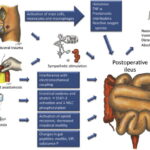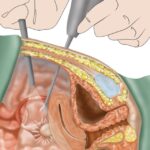Postoperative ocular pain refers to discomfort or pain experienced by patients following eye surgeries, such as cataract removal, glaucoma treatment, or refractive procedures like LASIK. This type of pain can vary in intensity and duration, and effective management is crucial for ensuring the patient’s recovery and well-being. Proper pain control is essential for minimizing complications and enhancing the overall surgical outcome.

Causes of Postoperative Ocular Pain
Postoperative ocular pain can arise from various factors, including the surgical procedure itself, the patient’s individual anatomy, and potential complications. Understanding these causes is crucial for determining the most effective pain management strategies.
Surgical Trauma
The primary cause of ocular pain after surgery is the trauma inflicted on the eye during the procedure. Incisions, removal of tissue, or laser interventions can cause temporary inflammation and sensitivity in the eye, resulting in discomfort or pain.
Inflammatory Response
Surgical procedures often provoke an inflammatory response, as the body reacts to the healing process. Inflammation can cause pressure within the eye, leading to pain. This inflammation typically peaks in the first few days after surgery and gradually decreases as healing progresses.
Dry Eye Syndrome
Dry eye syndrome is a common complication following ocular surgery. It occurs when the tear film is disrupted, leading to symptoms such as itching, burning, and a gritty sensation, all of which can contribute to postoperative ocular pain.
Infection or Endophthalmitis
Although rare, infection is a serious complication that can lead to significant ocular pain. Endophthalmitis, an infection of the intraocular space, is often accompanied by redness, swelling, and severe discomfort.
Glaucoma or Increased Intraocular Pressure
In some cases, postoperative ocular pain is caused by an increase in intraocular pressure (IOP), which may occur as a result of surgery or medications. Elevated IOP can cause discomfort and potentially lead to vision-threatening complications if left untreated.
Symptoms of Postoperative Ocular Pain
The symptoms of postoperative ocular pain can range from mild discomfort to intense pain, depending on the severity of the surgery and the patient’s response. Common symptoms include:
- Mild to moderate discomfort: Often described as a sensation of pressure or a foreign body feeling in the eye.
- Sharp or stabbing pain: Associated with more invasive procedures, particularly those involving deeper layers of the eye or more extensive surgery.
- Sensitivity to light (photophobia): Increased sensitivity due to the surgical trauma or inflammation.
- Blurred vision: Can occur as a result of surgery or as a side effect of medications.
- Redness and swelling: Indicative of inflammation or infection.
When to Seek Medical Attention
If the pain becomes unmanageable or is accompanied by severe visual disturbances, redness, or discharge, it’s essential to consult an ophthalmologist promptly. These could be signs of a more serious complication that requires intervention.
Postoperative Ocular Pain Management Strategies
Effective pain management following ocular surgery is vital to enhance patient comfort, promote faster healing, and reduce the risk of complications. A multi-faceted approach is often required to manage postoperative ocular pain effectively.
Pharmacologic Approaches
1. Topical Analgesics
Topical nonsteroidal anti-inflammatory drugs (NSAIDs) are commonly used to reduce inflammation and control pain in the immediate postoperative period. These are typically administered as eye drops and can help alleviate discomfort without systemic side effects.
2. Oral Pain Relievers
For more significant pain, oral analgesics such as acetaminophen or ibuprofen may be prescribed. These medications help control mild to moderate pain and reduce inflammation.
3. Corticosteroids
Steroid eye drops are often used after ocular surgery to manage inflammation. While effective in reducing swelling, corticosteroids should be used with caution as they can increase the risk of elevated intraocular pressure or infection.
4. Antibiotics
Prophylactic antibiotics are often prescribed postoperatively to prevent infections, which can cause severe pain and complications. If an infection is suspected, more intensive treatment with antibiotics may be required.
Non-Pharmacologic Pain Relief
While medications play a central role in postoperative pain management, non-pharmacologic strategies can also help enhance patient comfort and support the healing process.
1. Cold Compresses
Applying a cold compress to the eye can help reduce inflammation and provide symptomatic relief from mild discomfort. It’s important to use a clean, soft cloth to avoid introducing bacteria into the surgical area.
2. Rest and Eye Protection
Adequate rest is essential for healing after eye surgery. Patients should avoid strenuous activities that could strain the eyes and wear protective glasses or shields to prevent accidental rubbing or injury.
3. Artificial Tears
For patients experiencing dry eye symptoms, the use of preservative-free artificial tears can provide relief from the discomfort associated with dryness, which is common after ocular surgery.
Preventing Postoperative Ocular Pain
Preventing ocular pain in the postoperative period involves a combination of proper surgical technique, post-surgical care, and patient education. Key prevention strategies include:
- Minimizing surgical trauma: Surgeons should employ precise techniques to minimize tissue disruption, reducing the risk of postoperative pain.
- Early use of anti-inflammatory medications: Prophylactic use of anti-inflammatory medications can help prevent excessive inflammation and pain.
- Managing dry eye symptoms: Patients with a history of dry eye syndrome should be identified preoperatively, and appropriate measures, such as using moisture-preserving ointments or eyelid closure therapy, should be implemented.
- Proper patient education: Patients should be educated about the normal postoperative pain course, the importance of following prescribed treatments, and when to seek medical attention for potential complications.
Complications Associated with Postoperative Ocular Pain
While most postoperative ocular pain resolves with time and appropriate treatment, some patients may experience complications that require further intervention.
Chronic Pain
In rare cases, patients may experience persistent pain long after the expected recovery period, potentially due to nerve damage or chronic inflammation. These cases require specialized management and may involve referral to a pain specialist.
Infections
Infections such as endophthalmitis can lead to intense pain and visual loss if not treated promptly. Preventive measures, such as antibiotic prophylaxis, are crucial to reducing this risk.
Increased Intraocular Pressure (IOP)
Elevated IOP can occur as a result of surgical trauma or as a side effect of corticosteroid use. This condition must be monitored closely, as prolonged elevated pressure can lead to optic nerve damage and permanent vision loss.
Postoperative ocular pain is a significant concern following eye surgeries, but with careful management, most patients can recover comfortably and without complications. By combining pharmacologic treatments with non-pharmacologic interventions and preventive strategies, healthcare providers can help minimize pain and enhance the recovery process. Early recognition of complications, patient education, and adherence to best practices in postoperative care are essential to achieving the best outcomes for patients undergoing ocular surgery.

